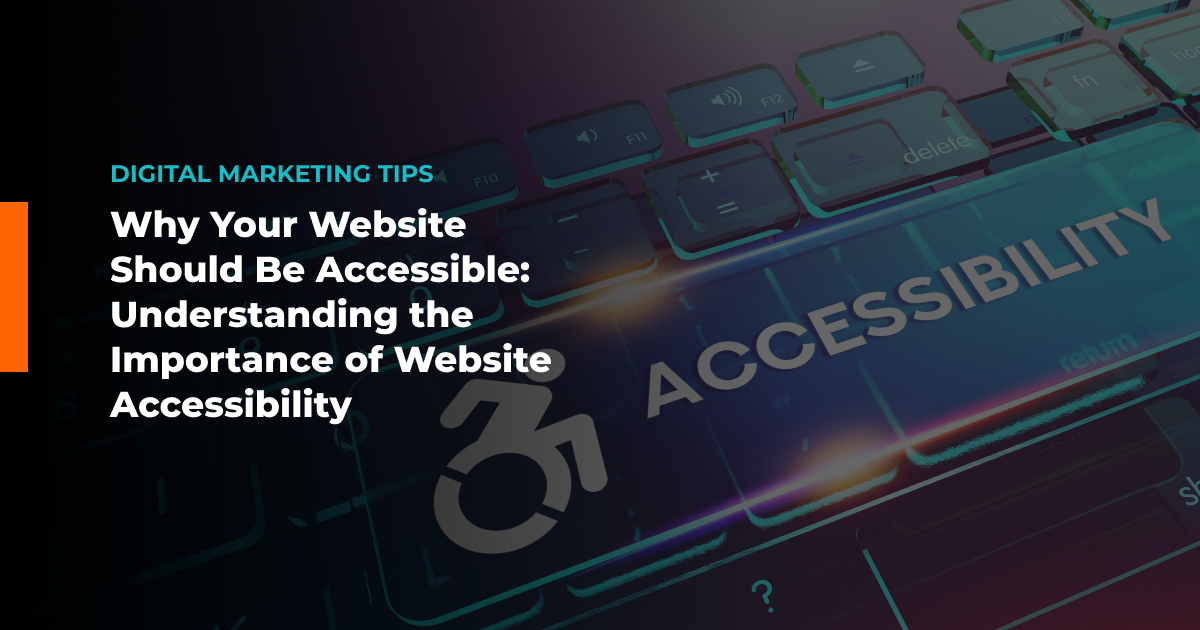
In an increasingly digital world, the importance of website accessibility cannot be overstated. Ensuring that your website is accessible means that it can be used by people of all abilities and disabilities. This not only includes individuals with visual, auditory, motor, and cognitive impairments but also benefits a broader audience by enhancing the overall user experience. Here are the key reasons why your website should be accessible, along with the top five accessibility features every website should have.
1. Inclusivity and Equal Access
Website accessibility is a crucial aspect of promoting social inclusion. The internet is a vital resource for accessing information, services, education, and employment. By making your website accessible, you ensure that everyone, including those with disabilities, has equal access to these resources. This fosters an inclusive society where everyone can participate fully.
Creating an accessible website aligns with ethical standards of fairness and equality. It demonstrates a commitment to social responsibility and respect for the rights of all individuals, regardless of their abilities
2. Legal Compliance
In many countries, including Australia, there are legal requirements for website accessibility. Laws such as the Disability Discrimination Act 1992 (DDA) mandate that websites be accessible to people with disabilities. Non-compliance can result in legal actions, complaints, and potential financial penalties. Ensuring your website is accessible helps you avoid these legal issues.
The Web Content Accessibility Guidelines (WCAG) set forth by the World Wide Web Consortium (W3C) provide a set of standards for web accessibility. Adhering to these guidelines not only helps you meet legal requirements but also ensures that your website follows best practices in the industry.
3. Enhanced User Experience
Accessible websites are generally more user-friendly. Features such as clear navigation, readable text, and intuitive design benefit all users, not just those with disabilities. By focusing on accessibility, you improve the overall usability of your site, leading to higher satisfaction and engagement rates.
Accessibility features, such as keyboard navigation, screen reader compatibility, and alternative text for images, cater to a diverse range of user needs. This makes your website more flexible and adaptable, accommodating users with different preferences and requirements.
4. Broader Audience Reach
By making your website accessible, you open it up to a larger audience, including people with disabilities who might otherwise be excluded. This can significantly increase your site’s traffic and potential customer base, allowing you to tap into a previously underserved market.
Many accessibility practices overlap with search engine optimisation (SEO) best practices. For example, using descriptive alt text for images not only makes your site accessible to visually impaired users but also improves your search engine rankings. This dual benefit helps you reach a wider audience and boosts your website’s visibility.
5. Positive Brand Image
Demonstrating a commitment to accessibility enhances your brand’s reputation. Consumers are increasingly aware of and concerned about corporate social responsibility. An accessible website shows that your organisation values inclusivity and diversity, which can strengthen customer loyalty and trust.
In a competitive market, an accessible website can set you apart from your competitors. By prioritising accessibility, you position your brand as forward-thinking and inclusive, appealing to a broader and more diverse audience.
6. Future-Proofing Your Website
As technology evolves, accessibility features continue to improve. By prioritising accessibility now, you future-proof your website, ensuring it remains usable and relevant as new technologies emerge. This proactive approach saves time and resources in the long run.
Accessibility features often enhance cross-device compatibility, making your website more responsive and adaptable to different devices, including smartphones, tablets, and assistive technologies. This ensures a consistent and seamless experience for all users, regardless of how they access your site.
Top 5 Accessibility Features Every Website Should Have
Conclusion
Website accessibility is not just a legal obligation but a critical component of creating an inclusive, user-friendly, and successful online presence. By making your website accessible, you promote social inclusion, comply with legal standards, enhance the user experience, reach a broader audience, build a positive brand image, and future-proof your website. For more detailed information and guidelines, refer to the W3C Web Accessibility Initiative.
Prioritising accessibility ensures that your website is welcoming and usable for everyone, paving the way for a more inclusive internet.